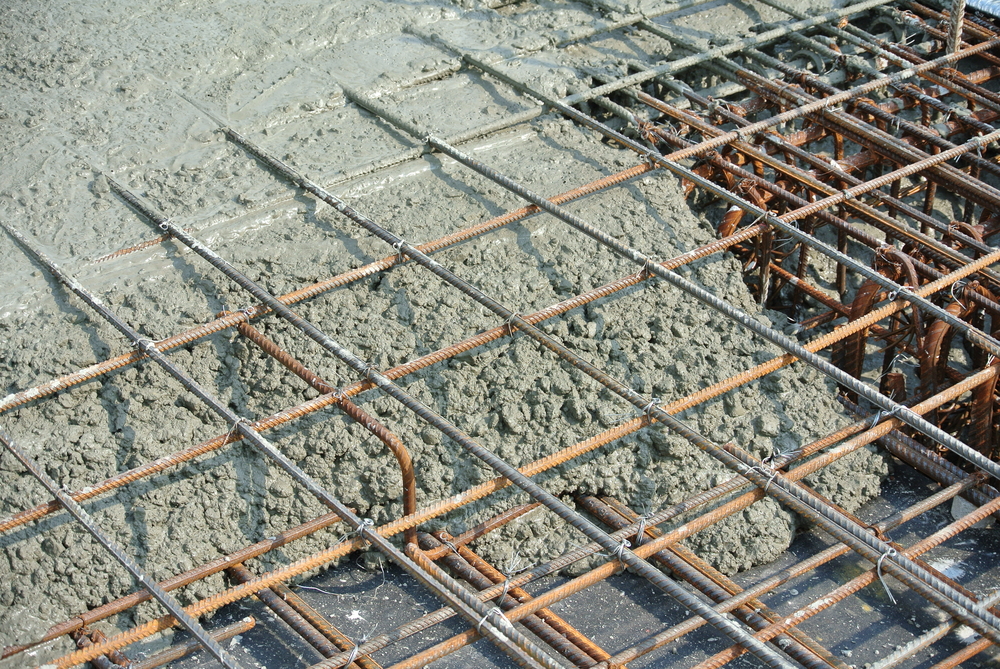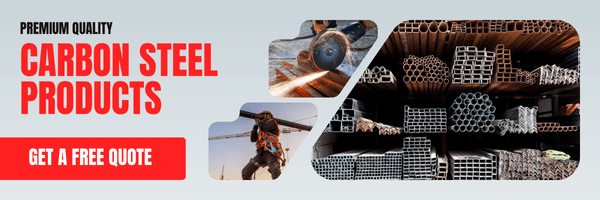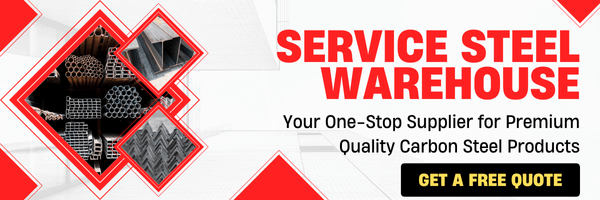Guide to Steel Rebar & Its Uses
February 3, 2022 | Categorized in: Types

If you’re planning a project that uses cement or concrete, you probably know that steel rebar plays a big role and typically runs through the pieces of concrete. But why is rebar necessary, how do the different types of rebar vary, and what do the different sizes mean? Read on to find out.
What is rebar?
Steel rebar, or reinforcing bar, are rods that are used in concrete construction to create reinforced concrete. They are usually ribbed to prevent slipping within the concrete and provide a number of benefits, such as improving the structural strength of concrete projects.
Why rebar is important
Concrete has a very high compression strength, but relatively low tensile and torsional strength. Steel helps with this by providing high strength in those areas, while helping to prevent the formation and spread of cracks that could destroy the whole project. In addition, steel is the best material for rebar use because of its similar thermal expansion properties to concrete, avoiding many issues relating to temperature change.

Types of rebar
While people may refer to “rebar” as a single product, there are actually different types that are made from different steels that provide different benefits and work best in different situations.
- Carbon Steel Rebar – The most common type of steel rebar, carbon steel provides a strong and versatile material at a relatively economical price for a variety of projects and applications.
- A615 Grade 60 – One of the best types of carbon steel rebar is A615 due to its strength and cost-effective price point. Grade 60 specifies that the rebar has a minimum yield strength of 60ksi (60,000 pounds per sq inch). Learn more about our A615 rebar stock here.
- A706 Weldable – If welding is required, A706 rebar is a more suitable option due to it being a low-alloy steel. This specification is particularly recommended for capacity-protected structures. Learn more about our A706 rebar stock here.
- Galvanized Rebar – Like with other galvanized steel products, this rebar is coated in zinc to greatly enhance its corrosion resistance properties and will typically last longer than untreated steel.
- Stainless Steel Rebar – In situations where zinc can’t be used to galvanize the rebar but corrosion is still an issue, stainless steel will occasionally be used as a substitute but is significantly more expensive.
- Epoxy-Coated Rebar – As its name suggests, this steel rebar (usually carbon steel) is coated in epoxy. This gives corrosion resistance at an economical price, but the delicate coating can be damaged by shifting subgrade or concrete sections.
- Glass Fiber Reinforced Polymer (GFRP) Rebar – An alternative to steel rebar, GFRP is made from fiberglass and has high corrosion resistance and tensile strength, but also price.
- European Rebar – Generally the least-recommended type of rebar, this is made from manganese and bends much easier than steel or fiberglass rebar. European rebar is also measured in different formats and units than the other types we have discussed.
How is rebar made?
One of the most eco-friendly steel products available, most steel rebar is made from recycled scrap metal (up to 97%). The scrap metal is melted down in a furnace before being shaped into billets. They’re then hot rolled into steel bars and tooling is used to create the ridges along the steel. The final step is cutting to length and allowing to cool.
What is rebar used for?
As mentioned earlier, steel rebar is primarily used in concrete structural applications. These include floors, walls, pillars, and other projects that involve carrying heavy loads or aren’t supported well enough for just concrete to hold. Beyond these uses, rebar has also developed popularity in more decorative applications such as gates, furnishings, and art.
How to read steel rebar sizes
Rebar size charts often have a designation number associated with each specification, but it might not be clear to everyone what that means. The number of a piece of rebar can be thought of as 1/8” in diameter. For example, that means that #4 rebar is 0.5” (or 4/8” or 1/2”) in diameter and #5 rebar is 0.625” (or 5/8”) in diameter.
Get the steel rebar you need today
Service Steel stocks a wide range of rebar sizes for all of your reinforcement needs. Our premium steel inventory is ready to ship and can be customized with finishing services such as cutting to length, galvanizing, and more. Request a quote today.

